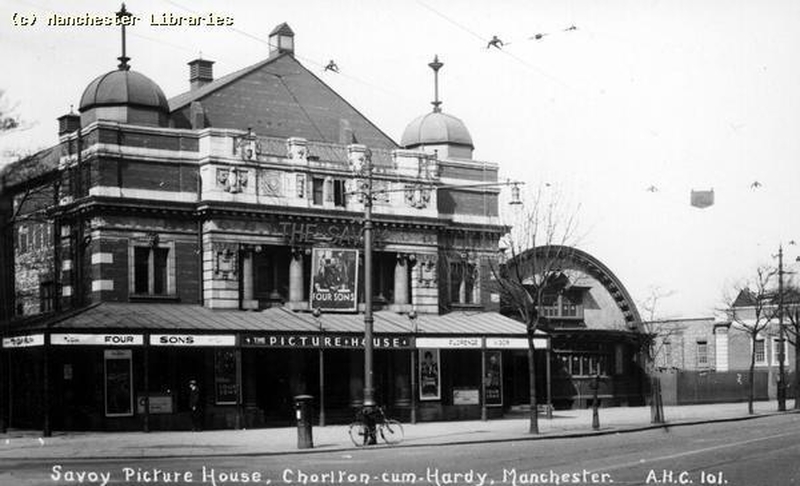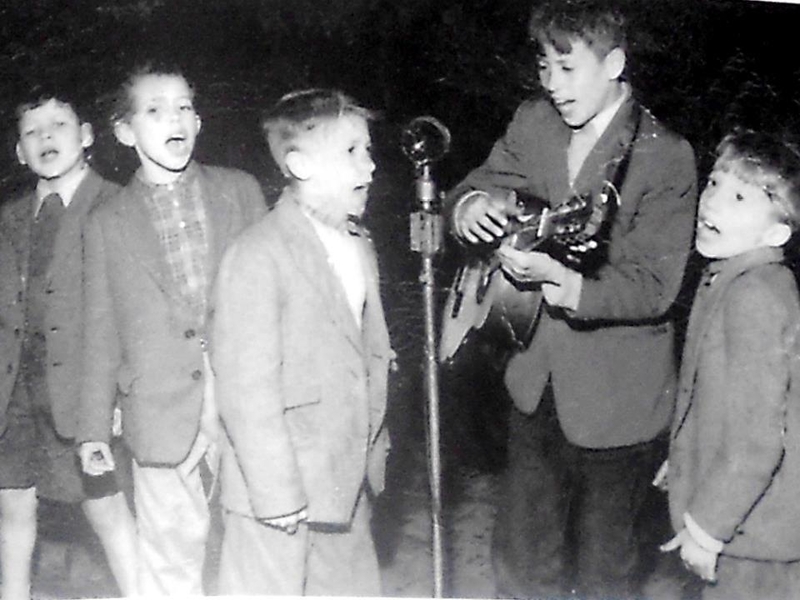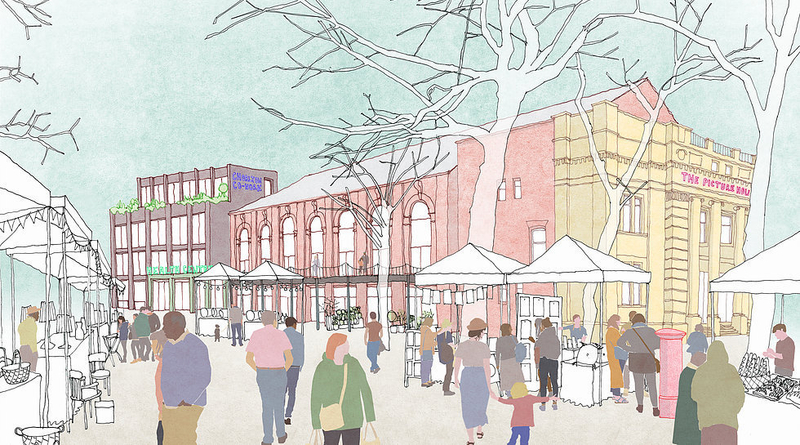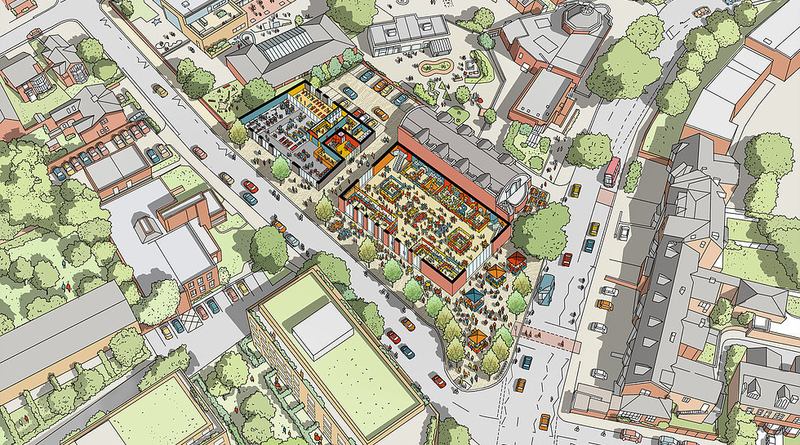Andrea Sandor investigates the inspiring community bid that has just smashed its fundraising target
You’d be forgiven for missing the elegant 1920s Picture House in the centre of Chorlton. Its facade was bricked over in the 1960s when Co-op bought the building and converted it into a funeral home. Fair enough, a characterful cinema entrance is perhaps inappropriate for a funeral parlour. But now the undertakers are moving out, and the entire building is in peril.
When Co-op decided to sell the Picture House - also known as The Gaumont - all but one of the 15 developers who put in an offer proposed demolishing the building and replacing it with flats. The exception was Generation, who submitted plans for redevelopment into a foodhall. They didn’t make the cut - but we’ll come back to them.
If everyone gives a little time, it can turn into something quite powerful
Now the Chorlton Community Land Trust (CCLT) are putting forward a community bid to save the building and turn it into a community asset, complete with food market, public square and health centre. The bid is due tomorrow (Friday), and CCLT’s ‘Stayin’ Alive’ campaign is taking pledges to show the strength of community support for the plans.


The Picture House has a special claim to fame as the site of the Bee Gees’ first-ever gig. The Gibb brothers weren’t yet teenagers when they formed their first band, the Rattlesnakes, with a couple of friends. In those days children performed at the local cinema, lip syncing to records. Lore has it the Rattlesnakes scratched their record while running to perform at the cinema and sang live. The performance was such a success, they decided to pursue a singing career - the rest is history.
Today the Bee Gees are still one of the best-selling groups of all time, trailing only the Beatles and Supremes on the Billboard charts. Fans still routinely visit the Picture House and pose for photos in front of the bricked up entrance. If CCLT’s bid is successful, those bricks could come down to reveal the original façade.
At its heart, the Stayin’ Alive campaign is a labour of love by residents determined to help shape and improve Chorlton. CCLT originally formed in April of this year to develop and lobby for social housing, but their remit is quickly growing. Their ambition is to “create a more fair and greener world where housing and urban regeneration works in our interests rather than those of big business.”
I meet Chris Peacock, CEO of CCLT, at a cafe near the Picture House. An energetic self-employed planning consultant and father of two, Chris’ enthusiasm is contagious.
“It’s starting to feel like this might actually happen,” he says with a look that’s two parts joy and one part disbelief. The pledges to save the Picture House are pouring in at an astonishing rate. In the hour and a half we spend chatting, pledges grow by £15k. At the time of writing, the campaign has raised £266K, exceeding the required total, in nine days.
Where are these pledges coming from, I ask, the community or from Bee Gees fans? “The vast majority are coming from the UK, obviously with Chorlton being the hotspot,” Chris says, “There are a few from Japan, the US and Australia but just a handful really. Also the majority are interested in shares rather than simple donations.”
While CCLT are inviting donations, they’re following in the steps of Hulme Garden Centre and Stretford Hall and inviting people to pledge community shares. These shares start at £250, can be withdrawn, and can’t be sold or transferred between members as in a typical company. Each member is entitled to one vote, regardless of the size of their share. If the bid is successful, they’ll ask those who signed up if they’d like to honour their pledge.

CCLT are partnering with Generation (I said they’d come back into the picture), who approached them at a community meeting about the building. They’ve worked together with the community through a series of well-attended meetings (70-80 attendees each) to draw up plans that include a food, drink and arts market; performance venue; co-working office and community gym. It also includes space for a health centre, as the GP across the street needs to double in size. Finally, the plans include pedestrianising the side street outside the building, making it a public square for markets and civic events.
The plans have been created relatively quickly and largely thanks to volunteer hours. CCLT only caught wind the building was being sold after Co-op had already whittled down the offers to a shortlist. Although their attempt to register the site as a community asset was unsuccessful, the Co-op agreed to give them two months to put together a viable bid.
At a community meeting in September, the team outlined their plans and passed on messages of support from the Gibb family. Hazel and Justine Gibb, as well as councillor Eve Holt, have all been active in supporting the campaign.
The last two months have seen residents pool their resources and call on contacts to provide assistance. The architects and surveyors on the project have mostly provided their services for free, with the expectation they’ll be brought on if the bid is successful.

“It’s amazing. Chorlton is full of people with relevant, excellent skills,” says Chris, “If everyone gives a little time, it can turn into something quite powerful.”
The biggest challenge, he reflects, has been going up against developers proposing much more profitable luxury flat schemes. However, Chris feels they’ve developed a viable bid and hopes the Co-op - as a socially oriented corporation - will take into consideration the ‘social value’ of the bid, as well as its commercial offer.
If the bid is successful, CCLT would like to work with other communities to undertake similar projects. “This should be successful all over Manchester. It shouldn’t just be in middle-class areas like Chorlton,” adds Chris. He believes CCLT is part of a shift in the city more broadly: “It’s time for a change in attitude from developer-led to community-led development. We’re engaging with developers and showing there’s another way of doing it with support from the community.”
The success of Hulme Gardens and Stretford Hall suggest community benefit societies aren’t just the province of the more affluent. They may well be the way of the future. May the Picture House scheme be the next one.
Pledge your support
You can donate to the Stayin’ Alive campaign
















